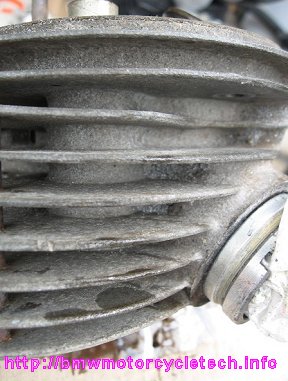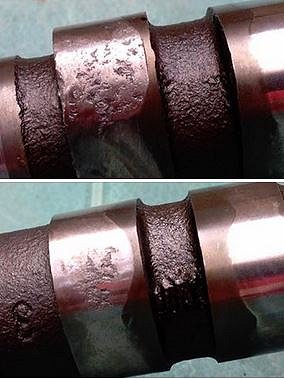If you are installing a camshaft and/or followers, READ http://bmwmotorcycletech.info/cams.htm regarding assembly pre-lubrication.
You may think that pulling off a jug is major surgery & frightening to contemplate. Once you do it, perhaps at a TechDay; or, from the information in this article, you should no longer have much apprehension about doing it yourself.
CAUTION-1: Every year comes questions about removing a head, perhaps for a simple de-coking (and not pushrod tube seals), & whether it is possible or not….to keep the cylinder sealed at the bottom. In order to do this, you would have to very securely wrap bungees …or via some other means, …around the cylinder fins, across the motor, & all-around the motor. Or some such. You would have to keep the cylinders from moving off the base area in the slightest. This method has been done when I only needed to work on the heads & was being done ‘in the field’, such as at a Rally, or a TechDay, & no O-rings and no piston ring compressor were on hand, etc. But, in order to do it, the bungees must be super-tight & evenly surrounding the cylinder, fore & aft. I recommend you not try it. Chances are high that you will not be fully successful & your cylinders will leak oil.
CAUTION-2: Never reuse a head gasket unless it is a real emergency. While it is possible to leave the two head-to-barrel nuts in place (the ones located at 12:00 and 6:00), & to reuse the gasket by never separating the head from the barrel, this is a poor idea. It MIGHT result in distortion of the assembly. I have not seen that distortion, if the assembly is done fairly quickly, within minutes. Pure speculation anyway. These 2 head nuts (located at 12:00 & 6:00) are supposed to be the first to be loosened, the last to be tightened (in the usual cross-staging).
The remainder of this article is only available for Airheads Beemer Club members. Please <a href=”https://www.airheads.org/my-account/?wcm_redirect_to=post&wcm_redirect_id=462″>login</a> or <a href=”https://www.airheads.org/product-category/memberships/”>purchase a membership here</a> to join the Airheads Beemer Club, after which you will enjoy access this article and all members only content of the ABC web site.
Continue reading




